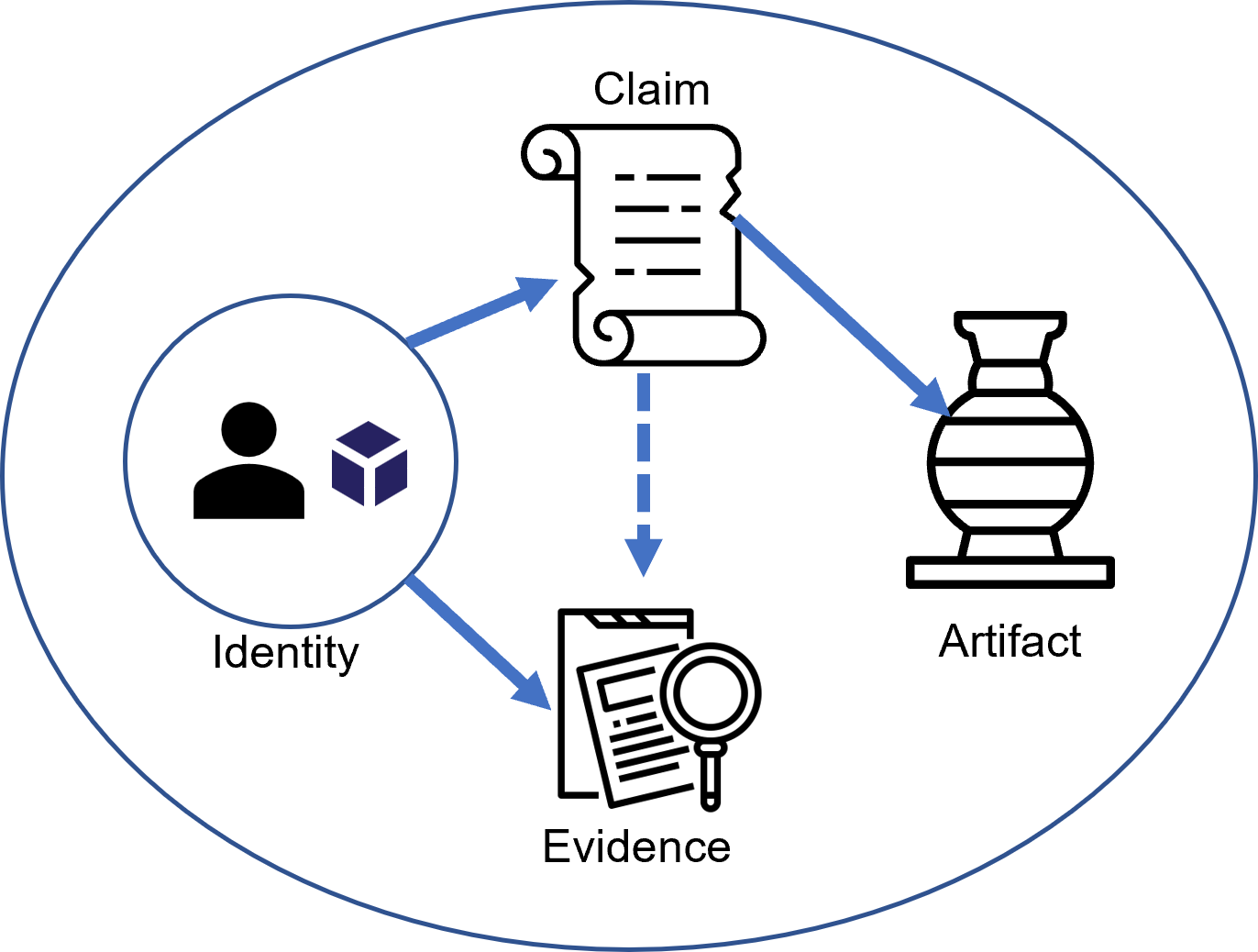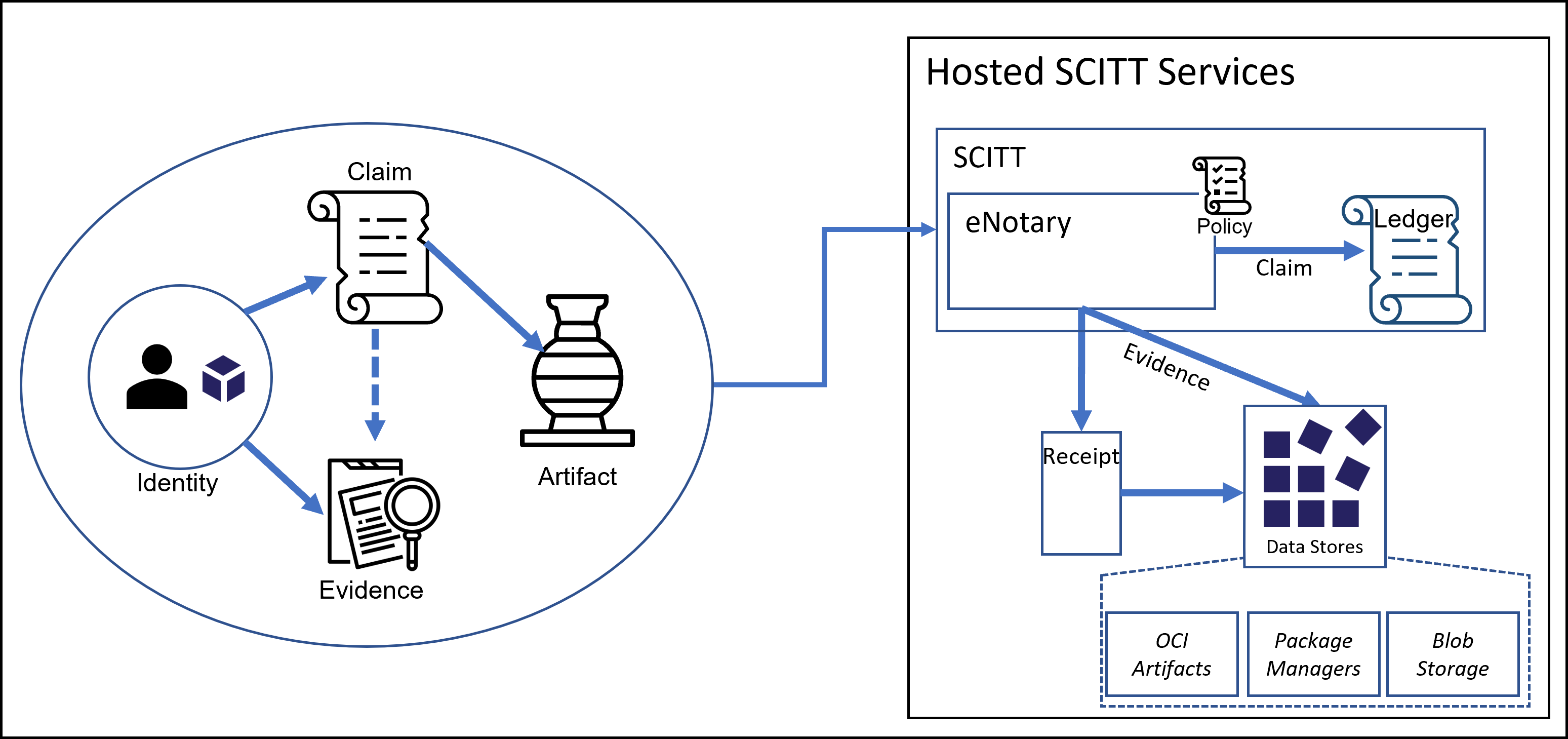What Is SCITT
The Supply Chain Integrity, Transparency and Trust (SCITT) initiative is a set of proposed IETF internet standards for managing the compliance of goods and services across end-to-end supply chains. SCITT supports the ongoing verification of goods and services where the authenticity of entities, evidence, policy, and artifacts can be assured and the actions of entities can be guaranteed to be authorized, non-repudiable, immutable, and auditable.
Interacting with SCITT
In practice, SCITT provides information about artifacts, enabling a mesh of dependencies to understand what each subsystem is consuming. Detailed information comes in varying formats, from structured to unstructured.
In SCITT, structured data is a claim. A claim is a well-structured statement, made by a verifiable entity that may have supporting evidence.

Continual Updates
Documenting claims at the time software is built or deployed would sell SCITT short, as software isn’t static. Software is continually updated, and more importantly, we continually learn and want to convey new information about artifacts that have already been released. Reputable OSS Projects and Independent Software Vendors (ISVs) don’t intentionally produce software they know to be vulnerable. Only after the software is public do we often find out about new vulnerabilities. SCITT is a means to convey a stream of continual updates for each versioned artifact.
SCITT Persistence
SCITT is intended to store verifiable claims for the life of the of the SCITT instance. One of the many questions that surfaces is how big will the SCITT ledger get? What kind of data will go on the SCITT ledger that would cause it to grow?
eNotary
SCITT is analogous to a digital, or electronic notary service (eNotary), where minimal information is written to the ledger, endorsing the claim. When users notarize legal documents, the notary ledger records the verified identity of the parties, referencing the legal document they are notarizing. The notary ledger doesn’t store the legal document, but does have a reference to it.
In SCITT, the ledger will contain pointers to the artifact, which the claims are made, with pointers to any supporting evidence.
Evidence Persistence
A SCITT instance will persist verifiable claims to its ledger. Any optional evidence will be persisted in associated storage.

While a SCITT instance should provide a default storage, there’s no limit on what storage services are used. For package managers that support breadths of content types, the evidence may be stored alongside the artifact by which the claim is being made. For package managers that limit the content types to the specific package type, a SCITT instance should provide default storage persistence.
For more info, see: Supply Chains